#maria warburg
Text


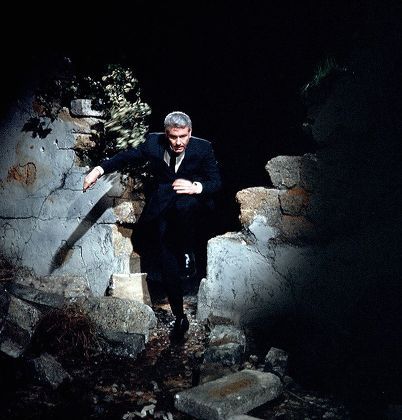

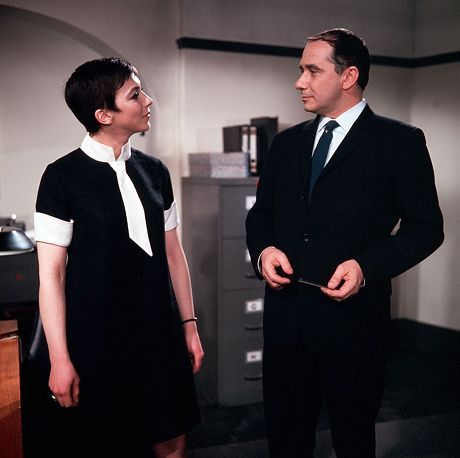


Man in a Suitcase: Somebody Loses, Somebody... Wins? (1.19, ITC, 1968)
"Mr. McGill, I was told that you do dangerous work for money. I offer you dangerous work - and I offer you money in proportion."
"What proportion?"
"Name your price."
"Ok. I get a legitimate visa. I travel under my own name, using my own passport. I'll obey every law in the book. And if I smell the slightest aroma of trouble, baby, I'm heading home. And if I locate your brother, it's gonna cost you twenty thousand dollars, plus expenses. And if I don't locate your brother... it'll cost you twenty thousand dollars, plus expenses."
"Those are difficult terms."
"Do me a favour, turn me down."
#man in a suitcase#somebody loses‚ somebody... wins?#itc#1968#jan read#john glen#richard bradford#jacqueline pearce#godfrey quigley#carl duering#philip madoc#gordon sterne#paul hansard#carl bernard#peter hager#derek prentice#wendy hall#david scheuer#bettina jonic#maria warburg#gerda koeppler#for me‚ not just the pinnacle of MiaS‚ but one of the best individual episodes of tv that ITC ever produced. and an unlikely success too:#this was the final episode of the first production block‚ with Bradford and crew growing tired and in need of a break. it was also John#Glen's directorial debut (having worked as an editor and a.d.) and went over schedule‚ to his horror (he thought he'd blown his chance)#plus on set accidents and bts arguments.. but no‚ the final product is absolutely wonderful (ymmv ig). Jan Read had ended up writing for#show through pure coincidence (his Spanish wife did some language work on 1.16 The Man Who Stood Still) but his script is the show at its#sharpest‚ wittiest‚ darkest and most cutting. Jac Pearce‚ having forged a genuine friendship with Bradford on 1.7‚ returned in a bigger#role as a former love of McGill's who may or may not have defected. cue a bitterly nihilistic study of the collateral victims of the cold#war‚ as a job in East Berlin gets murkier and more complicated. it's beautifully written‚ but wonderfully played too; the pair have genuine#chemistry‚ and you really feel like in another world they could have made it work together. sobs. maybe next time round.
22 notes
·
View notes
Text
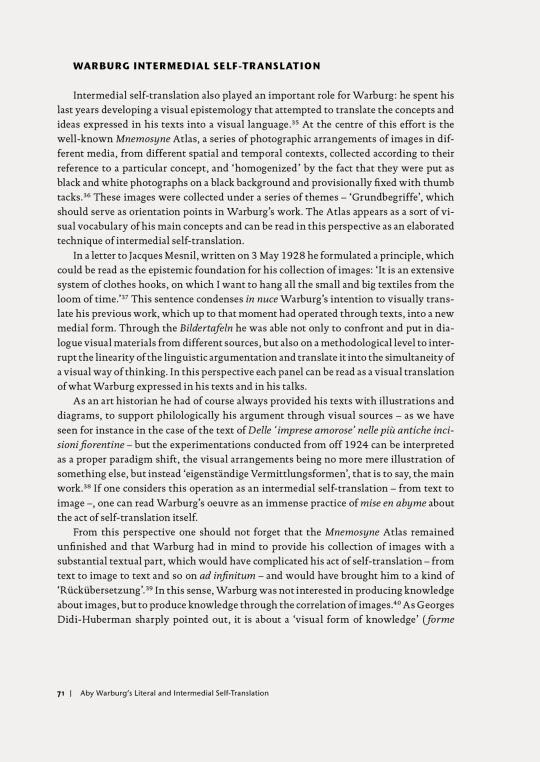
Maria Teresa Costa, Aby Warburg’s Literal and Intermedial Self-Translation, in Migrating Histories of Art, Edited by Maria Teresa Costa and Hans Christian Hönes, De Gruyter, Berlin, 2019, pp. 71-75
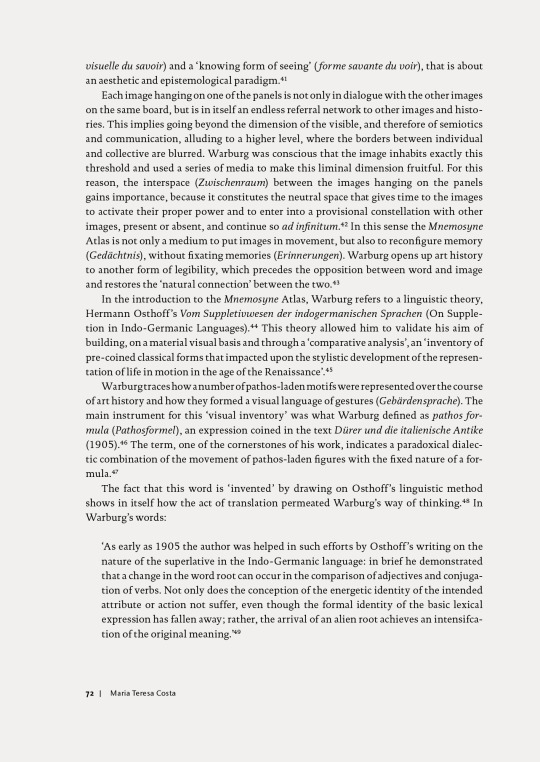
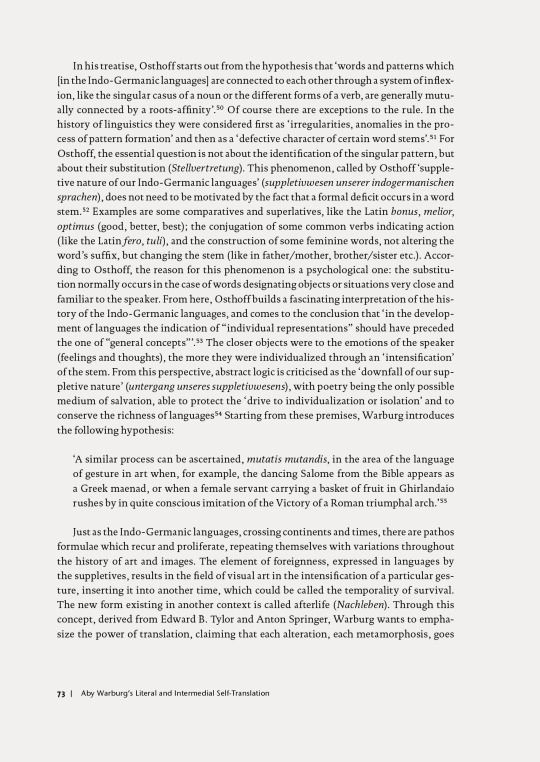
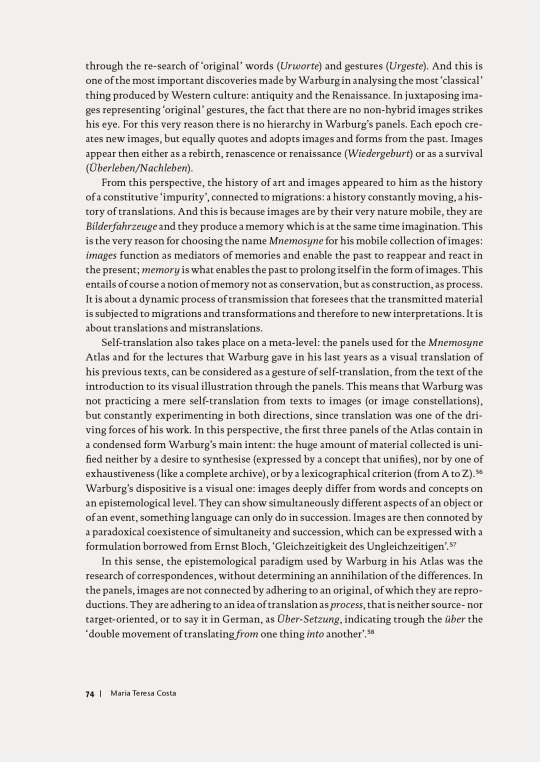
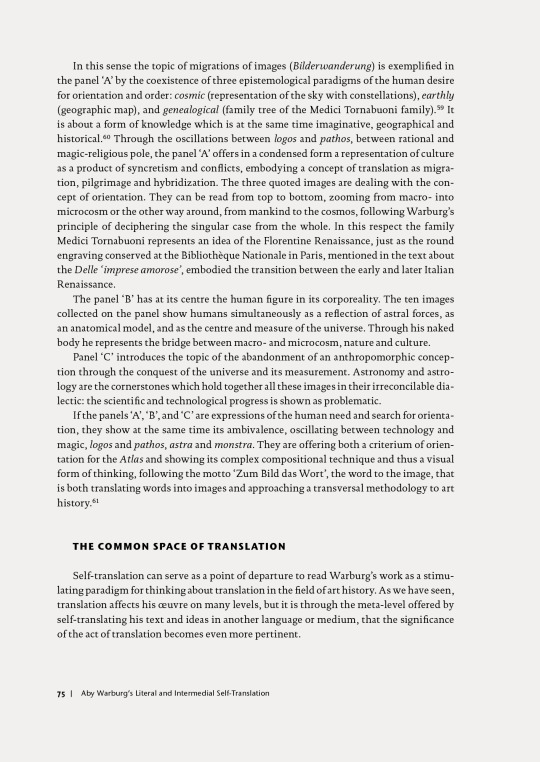
#graphic design#art#history of art#epistemology#book#maria teresa costa#hans christian hönes#aby warburg#de gruyter#2010s
8 notes
·
View notes
Text

#St. Maria Novella#Ninfa Moderna#Recht und Florenz#Aby Warburg#the origin of portrait rights#Domenico Ghirlandaio#capella Tornabuoni
3 notes
·
View notes
Text
Quest’anno sono sopravvissuto anche grazie a questo:
“Milano da Romantica a Scapigliata” Castello di Novara, 4.01.23
Dineo Seshee Bopape: “Born in the first light of the morning”, Hangar Pirelli Bicocca, 7.01.23
Bruce Nauman: “Neons, Corridors,Rooms”, Pirelli Hangar Bicocca, 7.01.23
Zerocalcare: “Ogni maledetto lunedì. Su due”, 12.01.23
“Grazie ragazzi” di Riccardo Milani, 15.01.23
“Mr & Mrs Clark. Ossie Clark and Celia Birtwell. Fashion and Prints 1965-74” Fondazione Sozzani, 21.01.23
“Ferito a morte” di Raffaele La Capria, Teatro Strehler, 22.01.23
“Indice, Storia dell’ “ di Dennis Duncan, 23.01.23
“Babylon” di Damien Chazelle, 29.01.23
“Dietro le quinte della polizia” di Georges Simenon, 10.02.23
“Zerocalcare dopo il botto” Fabbrica del Vapore Milano, 11.02.23
“La Casa della Memoria”, Milano, 11.02.23
“Gli spiriti dell’isola” di Martin McDonagh, 12.02.23
Matteo Osmieri e Alessia Binda, Concerti del conservatorio, 12.02.23
“ADI. Design Museum Milano, 18.02.23
Conservatorio 2
“Dietro le quinte della polizia” di Georges Simenon, 05.02.23
“Laggiù qualcuno mi ama” di Mario Martone, 19.02.23
“Quaderni ucraini”, 20.02.23
“Tessiture di sogno” di W.G. Sebald, 25.02.23
“La Maria Brasca” di Giovanni Testori, Teatro Parenti, 25.02.23
“Empire of Light” di Sam Mendez, 05.03.23
“Anatomia di un suicidio” di Alice Birch, Teatro Grassi, 12.03.23
“Romeo e Giulietta” di William Shakespeare, regia di Mario Martone, Teatro Strehler, 13.03.23
“Ho visto cose” di Mario Finotti, Galleria Giannoni, 18.03.23
“La moda giusta” di Marta D. Riezu,18.03.23
“Everything wehere all at once” di Daniel Kwan e Daniel Scheinert, 25.03.23
“Dal cucchiaio alla città” di Ugo La Pietra
“V13” di Emmenuele Carrère 02.04.23
“Fondazione Angelo Bozzola”, Galliare, 01.04.23
“Eloisa Manera”, Piccolo Coccia, 03.04.23
“Quando” di Walter Veltroni, 04.04.23
“Il ritorno di Casanova” di Gabriele Salvatores, 10.04.23
“Air. La storia del grande salto” di Ben Affleck, 09.04.23
“A Sound a Million Shape” di Alessia Obino, NJ Weekender Spring Edition, 15.04.33
“Ahmed” Pat Thomas, NJ Weekender Spring Edition, 15.04.23
Marc Ribot, NJ Weekender Spring Edition, 15.04.23
Al Doum & The Faryds, NJ Weekender Spring Edition, 16.04.23
Rhabdomantic Orchestra, NJ Weekender Spring Edition, 16.04.23
“Design Week Fuorisalone”, Milano, 18.04.23
“Augusto Betti artista+designer”, Fondazione Sozzani, 18.04.23
“Design Week-Fuorisalone: Alcova”, Ex mattatoio Milano, 22.04.23
“La La Lambro” di Maurizio Milani, 20.04.23
“Il sol dell’avvenire” di Nanni Moretti, 25.04.23
“Mon crime” di François Ozon, 30.04.23
“La quattordicesima notte del tempo ordinario” di Pupi Avati, 30.04.23
“Fra antropologia e storia dell’arte” di Bay Warburg, 07.05.23
“Cere anatomiche. La Specola di Firenze. David Ceonenberg”, Fondazione Prada, 13.05.23
“Housing Concert Piano City Milano: Bas Bulteed”, da Corrado Beldì, 21.05.23
Yuri Ancarani: “Lasciate stare i sogni” Pac Milano, 21.05.23
“Rapito” di Marco Bellocchio, 28.05.23
Luciano Rossetti: “Vent’anni di Novara Jazz”, 01.06.23
“Satoyama Quartet”, Nòva, Novara Jazz 2023, 01.06.23
Caterina Palazzi e Sudoku Killer, Nòva, Novara Jazz, 01.06.23
“Emong”, Fara Novarese, Novara Jazz, 02.06.23
Sebi Tramontana solo, Chiesa di San Pietro Barengo, Novara Jazz, 02.06.23
���Istant Song”, Castello di Barengo, Novara Jazz, 02.06.23
“Transatlantic” Michele Dal Lago e Icaro Gatti, Teatro di Tornaco, Novara Jazz, 03.06.23
Antonello Salis e Italo Satta, Villa Caccia Romagnano Sesia, Novarara Jazz, 04.06.23
“Insulæ Songs” Villa Caccia Romagnano Sesia, Novara Jazz, 04.06.23
Anais Drago, “Terre ballerine”, Villa Caccia”, Maggiora, Novarajazz 2023, 04.06.23
“Church of sound: Alina Bzhezhiska Quartet”, Basilica di San Gaudenzio, Novara Jazz, 04.06.23
Chet Beker, Vita e musica” con Francesco Martinelli, Castello, Novara Jazz, 08.06.23
“EABS meets Jaubi” Broletto, Novara jazz, 09.06.23
Francesco Simeti, “Pan di zucchero”, Palazzo Faraggiana, 10.06.23
Pasquale Mirra in solo, Palazzo Faraggiana, 09.06.23
“Flat Earth Society Orchestra” Broletto Novara Jazz 09.06.23
“TUN Torino Unlimited Noise” Broletto Novara Jazz, 09.06.23
Nicole Mitchell solo Palazzo Bellini, Novara Jazz, 10.06.23
Angelica Sanchez solo, Palazzo Bellini, Novara Jazz, 10.06.23
Damon Locks & Rob Mazurek, “New Future City Radio” Giardino Palazzo Natta, Novara Jazz, 10.06.23
“Mitelli Trio” e Joe McPhee, Castello, Novara Jazz, 10.06.23
Rob Mazurek e “Exploding Star Orchestra”, Broletto Novara Jazz, 10.06.23
Veryan Weston solo. Organo San Giovanni Decollato, Novara Jazz, 11.06.23
Adam Pultz-Melbye solo, Galleria Giannoni, Novara Jazz 11.06.23
Joe McPhee solo, Chiesa del carmine, Novara Jazz, 11.06.23
"Mitelli Avery Flaten Trio", Sovrintendenza, Novara Jazz, 11.06.23
"Chicago/Sao Paulo Undeground", Canonica del Duomo, Novara jazz, 11.06.23
BCUC-BANTU Continua Uhuru Consciousness, Broletto, Novara Jazz, 11.06.23
Gian Maria Tosatti “NOw/here”, Pirelli Hangar Bicocca, 17.06.23
Ann Veronica Janssen “Grand Bal” Pirelli Hangar Bicocca, 17.06.23
“Emily” di Frances O’Connor, 24.06.23
Dora Birnbaum, “Revolutionary Acts”, Osservatorio Prada, 01.07.23
Kris Ruhs “Figuratives”, Fondazione Sozzani, 01.07.23
Kris Ruhs , “Resonances”, Fondazione Sozzani, 01.07.23
Quntin Tarantino, “Cinema speculation”, 08.07.23
Nikolaj Achultz, “Mal di terra”, 18.07.23
Julien Green, “Parigi”, 25.07.23
“Assedine Alaïa, Arthur Elgort. En liberté. Fondation Alaïa, Parigi, 19.08.23
“Voyages en Noir et Blanc”, Galerie Bigaignon, Parigi, 19.08.23
“Basquiat X Warhol” Fondation Vuitton, Parigi 20.08.23
“Naples à Paris”, Louvre, Parigi, 21.08.23
“Aux origines de l’image sacrée”, Louvre, Parigi 20.08.23
“Frank Horvat, Paris, le monde, la mode” Jeu de Paume, Parigi 20.08.23
“Johan Van Der Keuken, Le rytme des Images” Jeu de Paume, Parigi, 20.08.23
“Annette en plus infinitement”, Fondation Annette e Alberto Giacometti Parigi, 21.08.23
“Ron Mueck”, Fondation Cartier, Parigi, 21.08.23
“Moï Ver”, Centre Pompidou, Parigi, 22.08.23
“Lynne Coehn et Marina Gradonneix, Laboratoires/Observatoires” Centre Pompidou Parigi, 22.08.23
“Serge Gainsbourg, Le mot exacte” Centre Pompidou, Parigi, 22.08.23
“Surréalisme au féminin?” Musée de Montmartre, Parigi, 23.08.23
“Over the Rainbow”, Centre Pompidou, Parigi, 24.08.23
“Avant l’Orage”, Bourse de Commerce Parigi, 25.08.23
“Accro-chat-ge” Musée d’Orsay Parigi, 25.08.23
“On ne peut vivre qu’à Paris”, di Emil Cioran e Patrice Reytier,29.08.23
“Oppenheimer” di Christopher Nolan, 03.09.23
“Manodopera” di Alain Ughetto, 08.09.23
“Un homme heureux” di Cioran-Reytier, 10.09.23
“Pepito principe del jazz” di Marco Molendini, 15.09.23
“Collettivo trifoglio-Iride” con Marte Bellu”, Nu Arts and Community, 21.09.23
“Blow Up Percussion” con Vittorio Montalti, Nu Arts and Community, 21.09.23
“Pleasure Garden: A listening Garden” Nu Arts and Community, 22.09.23
“Il Bosco che non c’è/ Nerverwood” con Antonella Cirigliano, Nu Arts and Community, 22.09.23
“Niccolò Baraggioli” vernissage, Nu Arts and Community, 22.09.23
“Umberto Orsini racconta Novara” Nu Arts and Community 23.09.23
“SaxFor Tone”, Nu Arts and Community, 23.09.23
“DNA” di Dennis Kelly, Collettivo Hangar, regia di Andrea Gattinoni, 23.09.23
“State Petals” con Ljuba Bergamelli e Zeno Baldi, 23.09.23
“Puppets Jazz” con Enrico Intra, Compagnia Colla e Civici Corsi di Jazz di Milano, 23.09.23
"Isole" di Gavin Francis, 30.09.23
"Il barone rampante" da Italo Calvino, con Stefano Massini, Teatro Grassi, 01.10.23
"Asteroid City"di Wes Anderson, 07.10.23
"Grand Hotel" di Roman Polanski, 8.10.23
"Over the Rainbow" (catalogo mostra), 10.10.23
"The Killers of the Flower Moon" di Martin Scorsese, 22.10.23
“Thao Nguyen Phan: Reincarnation of Shadows”. Pirelli Hangar Bicocca, 28.10.23
“James Lee Byars” Pirelli Hangar Bicocca, 28.10.23
“E in Deutsches Requiem” Basilica di San Gaudenzio, 29.10.23
“C’è ancora domani” di Paola Cortellesi, 1.11.23
“Händel, Bononcini” Novarien Trumpetes Ensemble, San Gaudenzio, 5.11.23
“Memorie di un baro” di Sacha Guitry, 7.11.23
“Sinfonia n. 4 di Schubert e Quattro Pezzi Sacri di Giuseppe Verdi” Teatro alla Scala, 11.11.23
“Max Vaduku, Through her Eyes” Gallerie d’Italia Milano, 25.11.23
“Maria Callas: ritratto” Gallerie d’Italia, 26.11.23
“She's Analog", e Adele Altro, NJ Weekender, 12.11.23
Daniela Pes, Nj Weekender, 12.11.22
“The Old Oak” di Ken Loach, 18.11.23
“Lou Reed, Re di New York” di Will Hermès, 18.11.23
“Argentina. Quel che la notte racconta al giorno”, Pac Milano, 26.11.23
“La pulce nell’orecchio” di Georges Feydeau, 26.11.23
“100 domeniche” di Antonio Albanese,02.12.23
“Coup de chance” di Woody Allen, 08.12.23
“Boldini, De Nittis et les italiens de Paris”, 09.12.23
“Trilogia della città di K.” di Àgota Kristof. Teatro Studio Melato Milano, 17.12.33
“One life” di James Hawes, 23.12.23
“Foglie al vento” di Aki Kaurismäki”, 30.12.23
Buon 2024
5 notes
·
View notes
Quote
A poche ore dalle dichiarazioni sul web del’ Arcivescovo Mons. Carlo Maria Vigano‘ si e’ abbattuta la spada censorea sul video in questione da parte di Youtube (Google) che lo ha rimosso su alcuni canali, diciamo ufficiali.
Dichiarazioni assolutamente esplosive con accuse precise, nomi e cognomi come qello di George Soros, Klaus Schwab (fondatore del Forum di Davos) e Bill Gates, come membri “fondatori della setta maledetta che si sono uniti per abbattere il regno di Cristo” .L’ alto prelato non si limita solo a questo, accusa i vertici della Chiesa di essersi uniti ai Rothschild, ai Warburge e ai Rockefeller che da secoli tramano nell’ ombra.
VATICANO: SCONTRO DI POTERI?
3 notes
·
View notes
Text
Living in a Material World: Brocade Fabrics in Quattrocento Florentine Art

During the middle ages Florence was traditionally associated with the textile industry. A prolific producer of various grades of woollen cloth (products ranged from the luxurious San Martino fabric, through the mid-range Panni di Garbo and onto Rascia, a rough unrefined woollen cloth) the city’s silk industry did not fully emerge until the quattrocento. Around halfway through the fifteenth century, the silk industry experienced a huge boom and luxury fabrics were being produced at unprecedented rates.
Despite the city’s various sumptuary laws, which at times forbade or limited the wearing and ownership of luxury fabrics, gold brocade made its way into the wardrobes of those who could afford it, into churches and royal courts. Furthermore, renderings of these silk and velvet fabrics, which, in reality, were lavishly woven through with metallic threads and also often heavily embroidered, made their way into coeval Florentine art.
Some of the paintings produced celebrated the great and good of Florence: its patricians and its merchant princes, others extolled the beauty and virtue of its noble females and even more honoured religious icons or recorded reverent events.
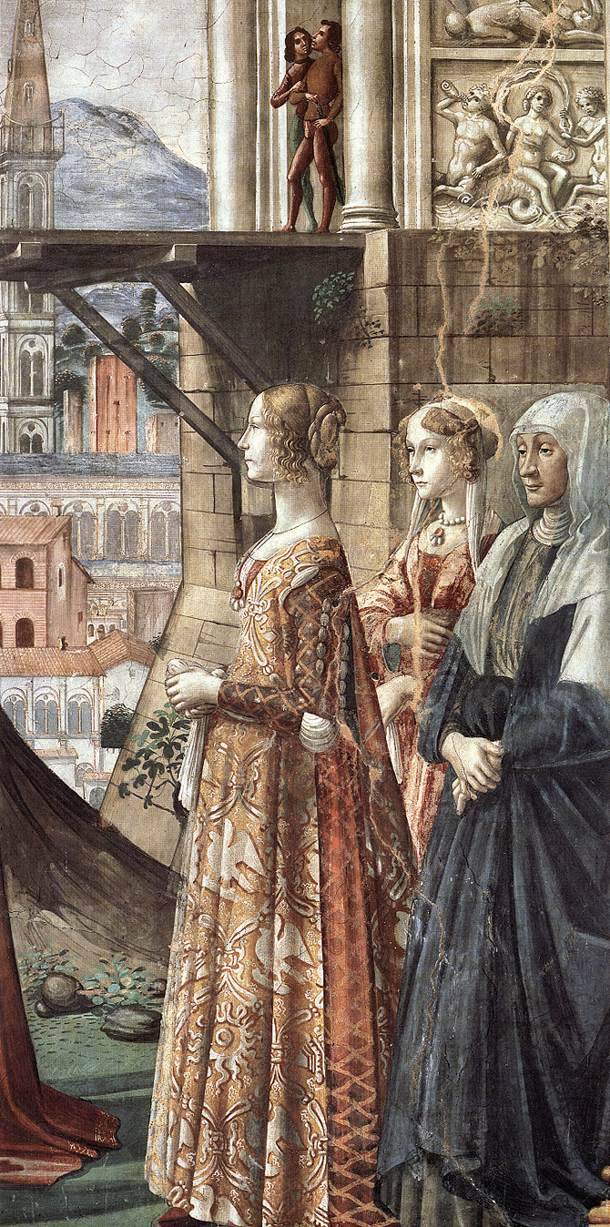

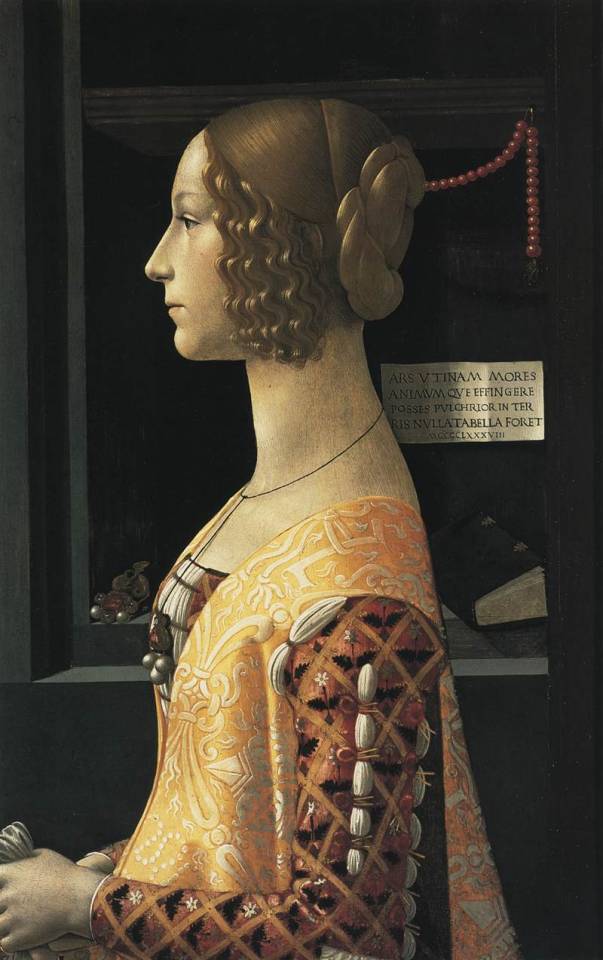



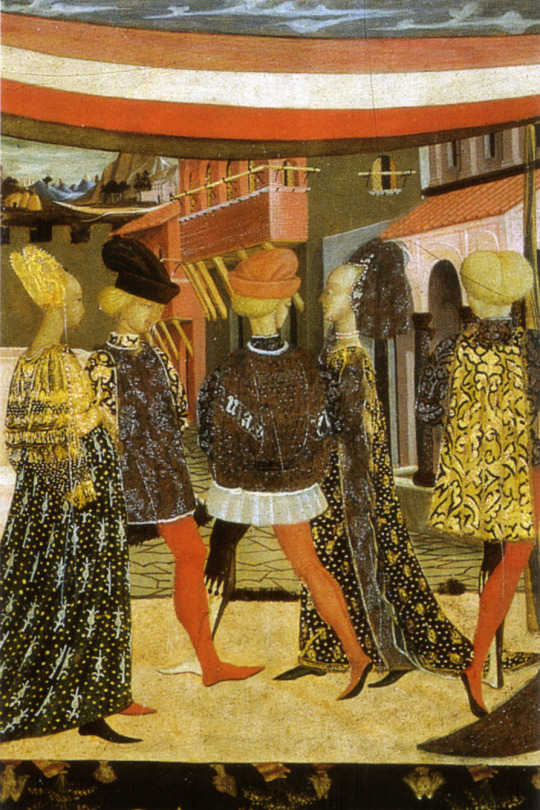
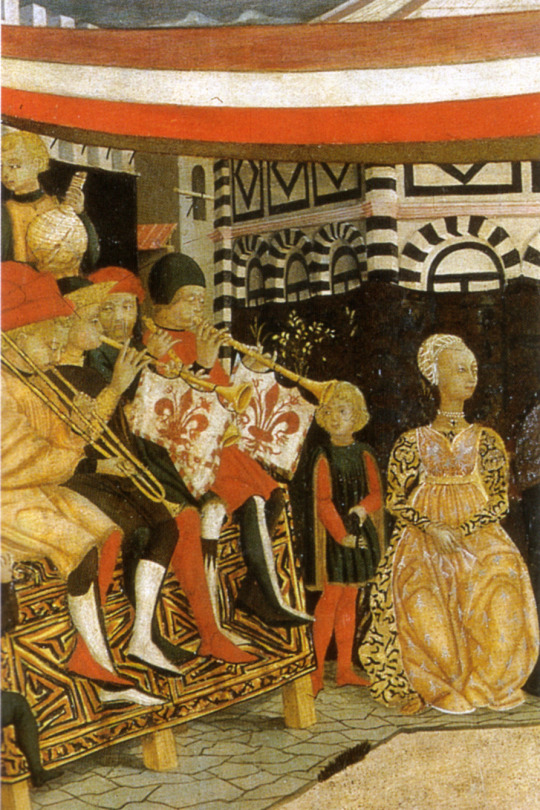

References: Rembrandt Duits, “Figured Riches: The Value of Gold Brocades in Fifteenth-Century Florentine Painting.” In Journal of the Warburg and Courtauld Institutes, Vol. 62 (1999), pp. 60-92.
Richard A. Goldthwaite, The Economy of Renaissance Florence, Baltimore: Johns Hopkins University Press, 2009.
Cecilie Hollberg, Textiles and Wealth in 14th Century Florence: Wool, Silk, Painting. Exhibition Catalogue: Galleria Dell'Accademia (05.12.2017-18.03.2018), Florence: Giunti 2017.
Maureen Fennell Mazzaoui, The Italian Cotton Industry in the Later Middle Ages, 1100-1600, London: Cambridge University Press, 1981.
Images: Benozzo Gozzoli, Procession of the Youngest King (detail), 1459-60, fresco, Chapel, Palazzo Medici Riccardi, Florence. Web Gallery of Art.
Domenico Ghirlandaio, Visitation (detail), 1486-90, fresco, Cappella Tornabuoni, Santa Maria Novella, Florence. Web Gallery of Art.
Benozzo Gozzoli, Procession of the Youngest King (detail), 1459-60, fresco, Chapel, Palazzo Medici Riccardi, Florence. Web Gallery of Art.
Domenico Ghirlandaio, Portrait of Giovanna Tornabuoni, 1488, tempera on wood, Museo Thyssen-Bornemisza, Madrid. Web Gallery of Art.
Domenico Ghirlandaio, Birth of Mary (detail), 1486-90, fresco, Cappella Tornabuoni, Santa Maria Novella, Florence. Web Gallery of Art.
Fra Angelico, St Michael, 1423-24, tempera on wood, Private collection. Web Gallery of Art.
Gentile da Fabriano, Adoration of the Magi, 1423, tempera on wood, Galleria degli Uffizi, Florence. Web Gallery of Art.
Benozzo Gozzoli, Procession of the Middle King (detail), 1459-60, fresco, Chapel, Palazzo Medici Riccardi, Florence. Web Gallery of Art.
Posted by Samantha Hughes-Johnson.
123 notes
·
View notes
Text
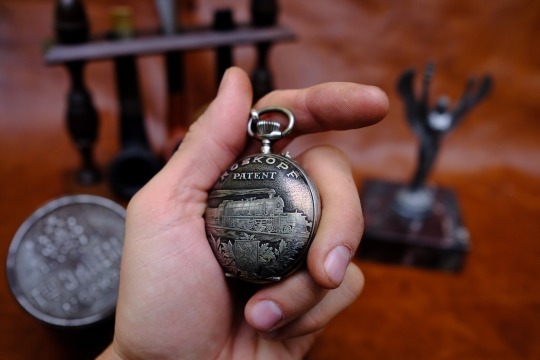

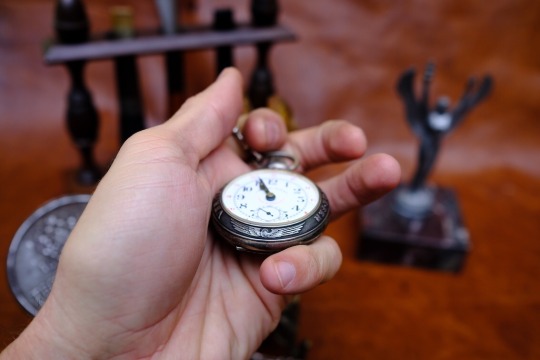
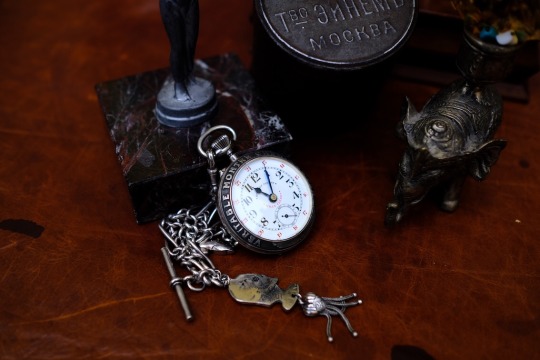

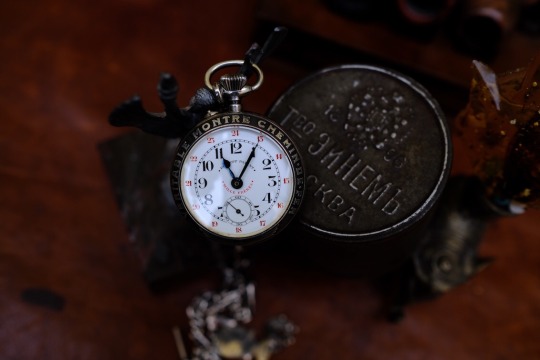
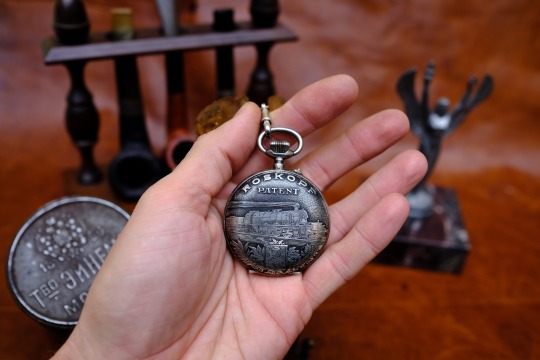
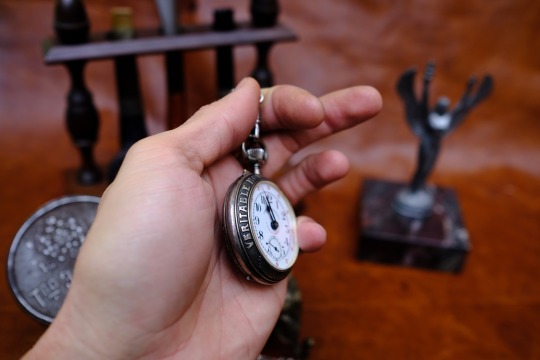
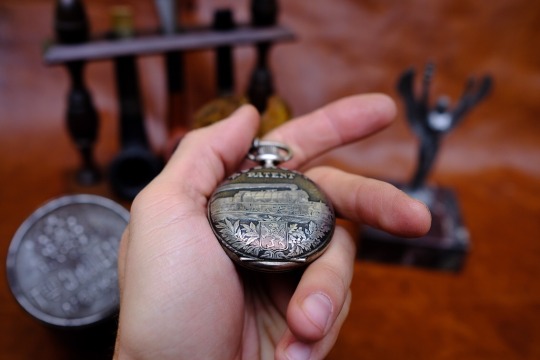
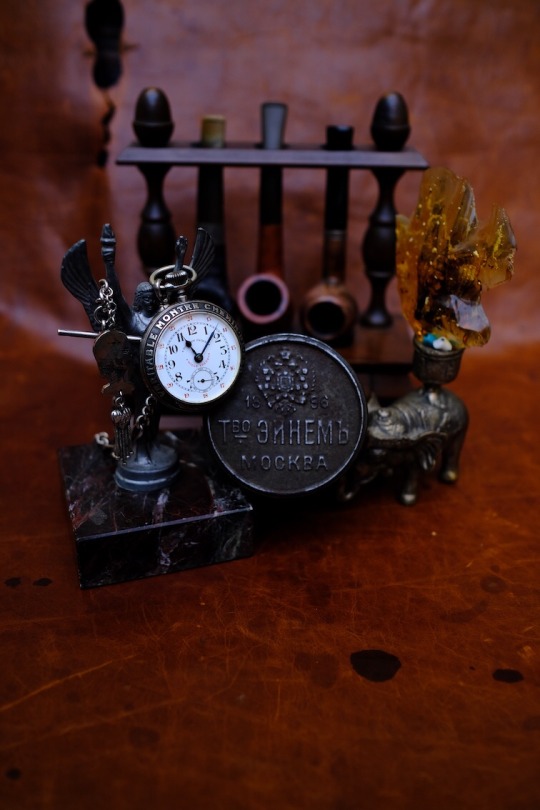
Yes. I know it's unusual to see photos of anything else on my Instagram that not are shoes. Don't be scared. I didn't change my job. I just want to share with you my great joy. A client of mine gave me this beautiful pocket watch. Thank you very much Mr. M.P.! I'm really moved. I spend hours and hours listening to the beautiful sound of the mechanism and admiring all the details of this Masterpiece. I used to ask you if you know any information about this watch. Please write in comments. I will be so grateful. #pocketwatch #rarewatch #roskopfpatent #travelgentleman #dandyshoecare #thankyou
Some information about this watch:
Часы Roskopf Patent
Roskopf
Georges Frederic Roskopf родился 15-го марта 1813 года в Niderwiller «Ни-дер-Уиллер», что в состав Великого княжества Баден, Германия. Жорж Фредерик был четвертым из 10 детей в семье своих родителей – мясника и трактирщика Johann Georg Roskopf и матери - Maria Elisabeth Roskopf ( девичья фам. Gmelin). Поскольку не было никакого будущего для всех десяти детей, в 1829 году, в возрасте шестнадцати лет, Джордж отправился в Ла-Шо-де-Фон, Швейцария, где он провел три года учеником в магазине по продаже часовых механизмов, корпусов и всякой часовой мелочи. Позже, в 1834, он стал учеником часовщика Дж. Бибера в том-же Ла-Шо-де-Фон. Так он прожил и проучился один год, после чего бросил чаовое обучение и женился на 37 летней овдовевшей Francoise Lorimier, матерьи двоих детей. Но супруга его была довольно зажиточной женщиной. И вот в 1835 году при финансовой поддержке своей супруги, Роскопф создаёт свою часовую компанию - 18 Leopold-Robert. Он налаживает сотрудничество с компанией "etablisseur", которая занимается тем, что из приобретённых компонентов собирает готовые часы. В этом-же году у Джорджа рождается сын - Fritz Edouard. Но в 1850 году Джордж Роскопф продаёт свою фирму из-за недостаточной, по его мнению, прибыльности. После продажи он становится совместным менеджером филиала B.J.Guttmann Brothers of Warburg в Ла-Шо-де Фон с зарплатой в 5000 швейцарских франков в год. В 1855 году Роскопф снова создает своё предприятие вместе с сыном, Фрицем и Генри Гиндрауксом. Предприятие называется ROSKOPF, GINDRAUX & Со. Роскоп хотел сделать часы хорошего качества и в то-же время по доступной цене, что-бы его изделия могли позволить себе обыкновенные люди из рабочего класса. Через два года совместной деятельности Фриц уходит из компании и создает свой бизнес в Женеве,Гиндраукс так-же покидает компанию и становится директором часовой школы Neuchatel. В 1860 Роскопф начинает проектировать часы, которые могут быть проданы за 20 швейцарских франков и все еще быть отличного качества. Он назвал эти часы "Montre proletaire" (часы труженика). Со стороны других часовых производителей Роскопф не получил поддержки, наоборот его заказы на корпуса и некоторые механизмы производители начали отклонять. Но в 1867 году Роскопфу все-же удалось произвести задуманные им часы, и за 1867 год было произведено около 2000 экземпляров 20-франковых часов. Благодаря влиянию знаменитого дома BREGUET в Париже, Roskopf смог представить свои часы на Всемирной выставке в Париже в 1867 году. Это было смелое решение, т.к. на выставке принимали участие 152 швейцарских конкурента представлялвшие свои «шедевры». Однако жюри отметило работу Роскопфа бронзовой медалью выставки. После чего Breguet начал делать ему свои заказы, так-же BOREL & COURVOISIER и много других элитных производителей. В 1869 году часы Roskopf экспонировались в Амстердаме и там завоевали серебряную медаль. В 1870 GF Roskopf ввел часы с новым дизайном механизма и настройки. Эти часы стоят 25 швейцарских франков. В них он сократил количество частей, упростил спусковой механизм и ввел улучшенную систему обмотки. Хотя часы Roskopf были на самом деле предназначены для бедного человека, они не были его первыми клиентами, в отличии от аристократов и офицеров. В феврале 1867 Roskopf нанял молодого человека - Charles Léon Schmid (Леон Чарльз Шмид), для продажи ежемесячной партии в количестве 500-600 часов. У Леона возникла прекрасная идея представить часы различным европейским армиям и железнодорожным компаниям. Вскоре после этого спрос на часы Roskopf невозможно было удовлетворить. После смерти жены Франсуазы, в 1872, Жорж Фредерик продал дом в Ла-Шо-де-Фон, передал свой бизнес Леону Чарльз Шмид и братьям Чарльз и Эжен Wille. Новая компания стала носить название «WILLE FRERES». Общее количество изготовленных часов Roskopf Patent может быть оценено в 20 миллионов долларов.
В 1873 году Роскопф второй раз женился, в 1874 году получил швейцарское гражданство. Позже он переехал в Берн где 14 апреля 1889 года и умер. После смерти Роскопфа, многие часовые фирмы спешили называть себя его приемниками, дабы использовать на своих изделиях торговый знак Роскопфа. Но из всех претендовавших, только «WILLE FRERES» по праву могли использовать торговый знак Роскопф, что и делали в течении многих лет.
Сын Роскопфа – Фриц Эдуард Роскопф, вел свой часовой бизнес в Женеве и до смерти отца не производил часы в стиле Roskopf. После смерти отца, в 1897 году, Фриц регистрирует торговую марку «Thistel» специализирующуюся на часах и аксессуарах. В 1899 году Фриц получает патент на использование в своих часах механизма системы Roskopf и создает свои часы Roskopf, подписывая их FE Roskopf & Co. Его часы были изготовлены в Société Horlogere Reconvillier, в 1902 году переименован Reconvilier Watch Co. SA. В 1913 году торговая марка и регистрация была передана Buffat & Со Эта компания продолжала свою деятельность до 1970-х годов. Общее количество часов Roskopf FE может быть оценено в 20 миллионов долларов.
Сын Фрица Эдуарда – Луи Фредерик Роскопф, производством часов не занимался. Он был дилером по продаже тропических птиц. Но спустя какое-то время он понял, что с фамилией Роскопф в часовой индустрии можно зарабатывать хорошие деньги. В 1900 году он возвращается в Ла-Шо-де-Фон и вместе с часовщиком Léon-Henri Reinbold (Леона-Анри Райнбольд), он основал часовую компанию Louis Roskopf & Cie. Торговые марки его часов были следующие: 'Louis Roskopf S.A.', 'Petit Fils Roskopf' и 'Roskopf Nieto'. Около 1923 года компания объединилась с Reconvilier Watch Co SA. Эта компания продолжала свою деятельность до 70-х годов. Общее количество часов Louis Roskopf может быть оценено в 10 миллионов долларов.
#dandy shoe care#alexander nurulaeff#best gifts#rare pocket watch#roskopf patent#1900s#gentlemens tools#my collection#beautiful watch#art#patina
13 notes
·
View notes
Text
10. Büchermarkt “Leser für Leser” des Rotary Club Warburg steht bevor!
Club Präsident Michael Kohlschein und Vize Präsident Martin Troeltsch freuen sich auf viele Besucher des diesjährigen Büchermarktes des Rotary Club Warburg (v.l.n.r) | (c) Rotary Club Warburg
(Warburg) Der Büchermarkt „Leser für Leser“ des Rotary Club Warburg feiert ein kleines Jubiläum. Zum zehnten Mal in Folge veranstaltet der Warburger Club seine Aktion. Der beliebte Büchermarkt findet in diesem Jahr am 9. und 10.11.2019, jeweils in der Zeit von 10:00 bis 16:00 Uhr im Saal der Vereinigten Volksbank eG, Hauptstraße 66-68, in Warburg statt.
Büchermarkt des Rotary Club Warburg: Bücherspenden sind gern gesehen
Neben der Möglichkeit an den beiden Tagen des diesjährigen Büchermarktes in den Beständen von vielen tausend Büchern und Medien zu stöbern und diese zu erwerben, informiert der Rotary Club auch über seine aktuell unterstützten Projekte, direkt vor Ort und auch international. „Wir haben schon eine Reihe von Anfragen nach dem Termin des Büchermarktes erhalten. Dies zeigt uns, wie hoch das Interesse an unserer Aktion ist.“, erläutert Club-Präsident Michael Kohlschein.
Wer den diesjährigen Büchermarkt mit einer Bücherspende unterstützen möchte, ist herzlich eingeladen, seine Bücher im Rahmen des zentralen Annahmetermins am Freitag, 08.11.2019, ab 10:00 Uhr im Foyer des Saals der Vereinigten Volksbank eG (Eingang Desenberggasse) abzugeben. Sofern es sich um eine größere Anzahl an Büchern handelt, freuen sich die Warburger Rotarier darauf, wenn diese möglichst in Kartons verpackt vorbeigebracht werden.
Der Erlös der Büchermarktaktion wird für die Förderung von Projekten zur gezielten Leseförderung von Schülerinnen und Schülern an Warburger Schulen verwendet.
Zusatzinformation:
Das ist Rotary: Lokal verankert – global vernetzt.
Rotary International ist die älteste Serviceclub-Organisation der Welt. Seit der Gründung des ersten Clubs durch vier Freunde vor gut 110 Jahren hat sich Rotary zu einem weltumspannenden Netzwerk von 1,2 Mio. engagierter Männer und Frauen entwickelt, die eine gemeinsame Vision verfolgen. Sie wollen denen zur Seite stehen, die sich nicht selbst helfen können: im lokalen Umfeld der eigenen Gemeinde wie mit internationalen humanitären Hilfsprojekten.
Der Warburger Rotary Club wurde im Jahr 2010 gegründet und hat zurzeit 28 Mitglieder.
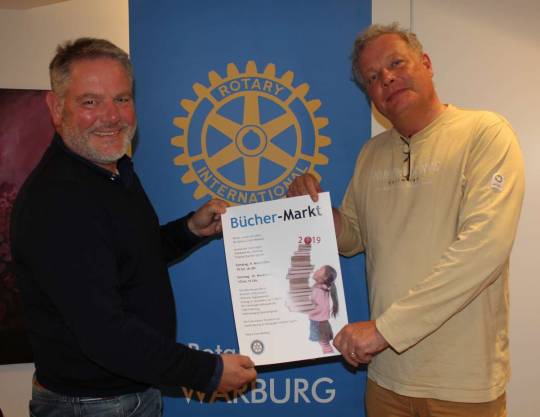
Samstag 09. November 2019
Büchermarkt: Leser für Leser • Rotary Club Warburg
10:00 Warburg Saal der Vereinigten Volksbank eG
Typ: Flohmarkt
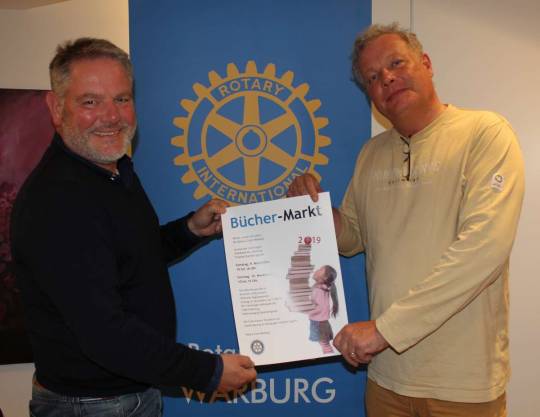
Sonntag 10. November 2019
Büchermarkt: Leser für Leser • Rotary Club Warburg
10:00 Warburg Saal der Vereinigten Volksbank eG
Typ: Flohmarkt
Weitere Veranstaltungen in Warburg

Samstag 26. Oktober 2019
Warburger Orgelherbst: Die Orgelmaus
16:00 Warburg Altstädter Pfarrkirche St. Marien Warburg
Typ: Konzert
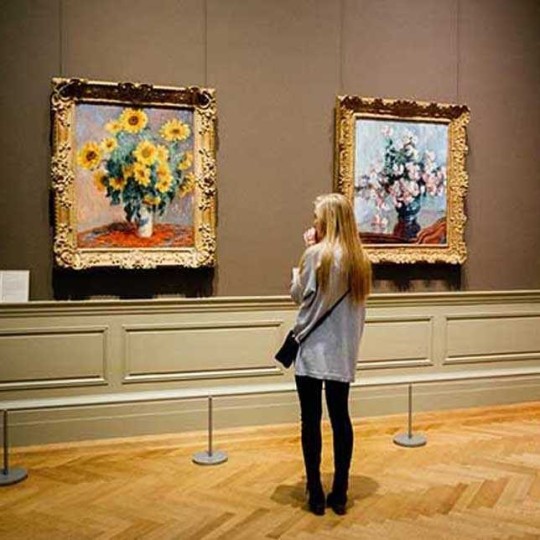
Sonntag 27. Oktober 2019
Rolf Gentz • Weiter
14:30 Warburg Museum im Stern
Typ: Ausstellung

Sonntag 27. Oktober 2019
Warburger Orgelherbst 2019 • Prof. Roland Maria Stangier (Orgel)
17:00 Warburg Altstädter Pfarrkirche St. Marien Warburg
Typ: Konzert

Donnerstag 31. Oktober 2019
Halloween
19:00 Warburg Musik-Cafe Pfeffermintz
Typ: Diverses
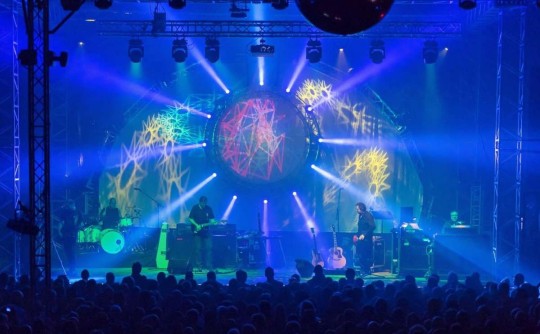
Donnerstag 31. Oktober 2019
Kings Of Floyd • Echoes Of The Past Tour
20:00 Warburg Stadthalle Warburg
Typ: Konzert
Jetzt: Ticket kaufen
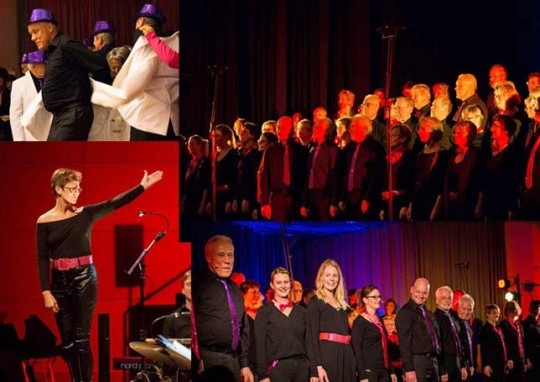
Samstag 02. November 2019
Schlagerrevue 2019 • CHORissimo 2000
19:30 Warburg Pädagogisches Zentrum Warburg (PZ)
Typ: Konzert » Chorkonzert

Samstag 02. November 2019
Caro Kiste Kontrabass • Musikalische Momentaufnahmen
20:00 Warburg Kulturforum Warburg
Typ: Konzert » Querbeet

Samstag 09. November 2019
Büchermarkt: Leser für Leser • Rotary Club Warburg
10:00 Warburg Saal der Vereinigten Volksbank eG
Typ: Flohmarkt
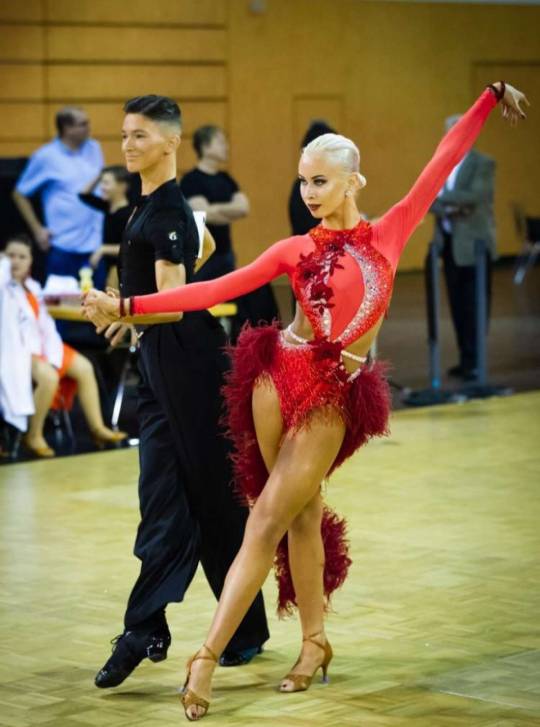
Samstag 09. November 2019
Rosenball • Tanzpaar Müller-Gommer
19:00 Warburg Stadthalle Warburg
Typ: Tanz » Tanzmusik

Sonntag 10. November 2019
Büchermarkt: Leser für Leser • Rotary Club Warburg
10:00 Warburg Saal der Vereinigten Volksbank eG
Typ: Flohmarkt
Read the full article
1 note
·
View note
Text
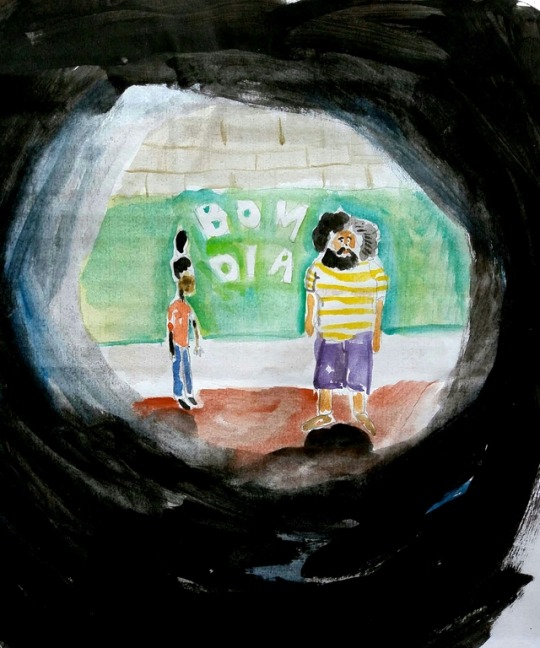
17/04/2019
Foi dada a largada .
"À PARTIR DAS IMAGENS”
ESCOLA ESTADUAL DE ENSINO FUNDAMENTAL DOUTOR JORGE
GUILHERME MOOJEN
BRUNO DE ANDRADE E CAROLINE FERREIRA
TURMAS 71 E 72
HORÁRIOS E DIA DA SEMANA INDEFINIDOS
SUPERVISORA ALESSANDRA DO AMARAL RAMOS
INTRODUÇÃO
“como a imagem estendeu tanto seu território, que hoje é difícil pensar sem ter que orientar-se na imagem.”
A imagem como gatilho para lembrar. Com o nosso acúmulo de informações sensoriais, as imagens servem a uma criação de quem somos e também revelam um recorte de memória carregado de vivências reais e experiências marcadas por significados.
Durante nossas observações, na escola Dr, Jorge G. Moojen, percebemos a importância das imagens no cotidiano dos alunos e como essa relação visual, a princípio, serve como estratégia de reconhecimento e aproximação dos conteúdos de aula. As imagens oferecidas pela escola tem lugar, temática, razão para estar, e momentos para consultar. O celular que furtivamente serve para consultar a imagem levanta também a dúvida da distração e do desvio, e por vezes o é. Porém, presenciar o que nunca ou pouco se viu é um contato lento, duvidoso e demorado. Uma leitura que não aprendemos na escola, a leitura da imagem.
De acordo com Nascimento (2011) ”As imagens não só materializam, em termos pictóricos, escultóricos e visuais as ideias como contribuem para consolidar as interpretações vigentes ou provocar mudanças na maneira de ver, registrar e interpretar.”
dessa forma, torna-se essencial deslocar o papel da imagem na escola como auxiliar na compreensão (o papel ilustrativo da imagem que percebemos nos livros didáticos, por exemplo) e entendê-la como dotada de existência própria e como produtora de discursos e significados passíveis de interpretação e problematização.
Essa aproximação entre o aluno e a imagem, também é uma aproximação entre o aluno e sua própria realidade? Quais as relações estabelecidas entre a vida cotidiana e os conteúdos da escola através das imagens? Como emancipar a imaginação de associações fáceis de imagem e palavra como as propostas pelos livros didáticos? Como determinar os locais das imagens para além das demarcações da escola e possibilidades do mundo? Como colocar o aluno em uma posição propositiva diante da imagem? Esta feita, através do objeto estudo imagem, pretendemos, sobretudo, responder às questões inquietantes que motivaram esse trabalho e nos perguntarmos mais.
METODOLOGIA
O processo ocorre em quatro etapas e pode ser alterado de acordo com a resposta aos estímulos do primeiro encontro. Ao todo serão cinco encontros (8 períodos) com os alunos do sétimo ano realizados entre um e dois períodos.
Observações: Os períodos estão especificados em cada etapa; Ainda não temos os horários da turma, pois serão alterados na próxima semana.
PRIMEIRO ENCONTRO – Uma primeira conversa sobre imagens (1 período)
À partir de três imagens, anacrônicas entre si, promover uma conversa com o intuito de nos apresentarmos, apresentarmos ao projeto e conhecermos os alunos e suas afinidades com imagens.
O que precisaremos:
Perguntas para abrir uma conversa sobre imagens e três imagens pensadas com antecedência e suas possíveis interpretações.
SEGUNDO ENCONTRO - Afinidade entre imagens (2 períodos)
Apresentação, breve análise do acervo de imagens físico e seleção individual de imagem (uma imagem por aluno). Dividiremos a turma em trios (afinidade deles ou das imagens ou dos dois?) para pensarem em uma palavra que represente/ atravesse/ relacione as três imagens do grupo.
O que precisaremos:
Acervo físico de imagens diversas (imagens publicitárias, de arte, de mídias sociais, de livros didáticos, fotografias…/ de acordo com número de alunos, pensar quantas imagens devem ser levadas?)
TERCEIRO ENCONTRO – Tensionando a imagem (2 períodos)
Apresentação da Biblioteca de Aby Warburg, exemplificando a força visual e de significados à partir dessas imagens agrupadas. Introdução de novas imagens que mudam o significado da palavra escolhida pelo grupo e, por conseguinte, o significado de suas próprias imagens. Reflexões dentro dos grupos.
O que precisaremos:
Reservar a sala de recursos audiovisuais da escola.
Com auxílio da Lista de Roukes, tensionar a palavra escolhida através de imagens que modificam seu significado. “o artista direciona a atenção da imagem, estabelece novas diretrizes e enfatiza a interpretação ou o significado simbólico que ele quer transmitir.”
(Roukes, 1988, item 3.1.2)
Slides com imagens e apresentação em vídeo/ slides do Atlas Mnemosyne.
QUARTO ENCONTRO – Novas narrativas pela reunião de imagens (2 períodos) União em grupos maiores, de seis pessoas, para pensarmos na disposição das imagens em um mapa, produzindo uma narrativa. Proposição de uma vernissage. O que precisaremos:
Suporte para disposição das imagens. Câmera ou celular para fotografar.
QUINTO ENCONTRO – Fruição e socialização (1 período) Disposição das imagens na sala pelos alunos e vernissage.
O que precisaremos:
Taças de plástico, refrigerante, água com gás, salgados e doces.
OBJETIVOS
• Ampliar repertório em artes visuais
• Percepção dos elementos da imagem
• Reconhecer os usos das imagens
• Aproximar-se das imagens através dos seus próprios conhecimentos
• Posicionar-se criticamente sobre as imagens e seus discursos
• Questionar e problematizar as interpretações vigentes das imagens no cotidiano
• Estabelecer relações diversas entre as imagens
• Criação de narrativas à partir das imagens
• Socialização e participação ativa nos debates em grupo
• Modificação do espaço da sala de aula em espaço outro, assim pensar em outras disposições para as imagens na sala
REFERÊNCIAS BIBLIOGRÁFICAS
BARBOSA, Ana Mae. A imagem no ensino da arte. 6. ed. São Paulo: Perspectiva, 2005.
ROUKES, Nicholas. Design Synectics Creativity in Design. Massachussets, USA, Davis Publications Inc., 1988.
DIDI-HUBERMAN, Georges. “Quando as imagens tocam o real”. Pós: Belo Horizonte, v.2, n. 4, p. 204-219, nov. 2012.
LARROSA, Jorge. O ensinar e o aprender. Pedagogia profana: danças, piruetas e máscaras. 4. ed. Belo Horizonte: Autêntica, 2001.
MARTINS, Raimundo; TOURINHO, Irene (Orgs.). Educação da cultura visual: conceitos e contextos. Santa Maria: Ed. da UFSM, 2011.
FERNANDES, Wolney. “Atlas de imagens e seus intervalos: uma constelação de conceitos flutuantes”. Revista Digital do LAV – Santa Maria – vol. 7, n. 2, p.144-155 – mai./ago. 2014
2 notes
·
View notes
Text
É como se a história das artes visuais — a pintura e a escultura, mas também a fotografia ou o cinema — pudesse ser lida como uma imensa história das emoções figuradas, dos gestos emotivos que Warburg denominava "fórmulas patéticas". É uma história cheia de surpresas, uma história na qual descobrimos que as imagens transmitem, e ao mesmo tempo transformam, os gestos emotivos mais imemoriais. Vejam, por exemplo, esta imagem de uma mulher (trata-se de Maria Madalena) que arranca os próprios cabelos aos pés da cruz de Cristo, em um relevo de bronze da Renascença italiana. De um lado, ela transmite um gesto de luto que de fato existia à época de Cristo na religião judaica (um gesto que, aliás, ainda existe mais ou menos). De outro, ela transforma esse gesto — e a emoção que o acompanha —, na medida em que, estando completamente descomposta, quase nua em seu vestido transparente, mais faz pensar em uma mulher... como dizer... louca de desejo. Assim, na mesma imagem, no mesmo corpo e no mesmo gesto, podemos descobrir duas coisas muito diferentes que, no entanto, coexistem: um luto (lamentar tristemente a perda de alguém) e um desejo (querer loucamente a presença de alguém).
Georges Didi-Huberman, "Que Emoção! Que emoção?"
0 notes
Text
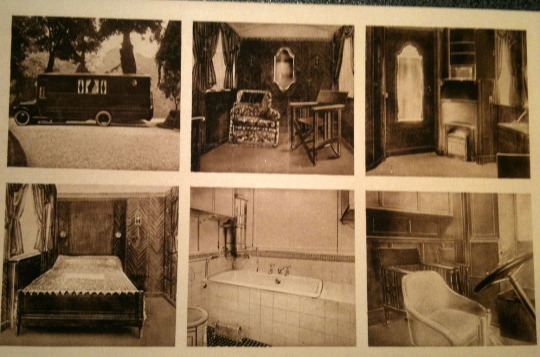
Roussel
Letzte Woche war Roberto Ohrt bei mir in Frankfurt zu Gast, einer der beiden Herausgeber des Atlasses von Aby Warburg. Große Ehre! Das heißt auch: einer derjenigen Ingenieure, die den Atlas das erste Mal überhaupt öffentlich deutlich, klar und scharf gestellt zu sehen gaben. Tafel 78 und 79, so muss man das jetzt sagen, waren vorher, auch mit der Ausgabe von Warnke und Brink, noch nicht zu sehen, auch wenn man schon ahnen konnte, dass diese Tafel gut werden, sobald jemand sich der Aufgabe annimmt. Es brauchte nicht zufällig Anarchisten und in Lettrismus bewanderte, um das zu tun. Die übrigen, die so nicht genannten Archisten, deren Buchstaben immer schon angetraut in Reih und Glied stehen, die sind befangen, noch im Archiv befangen, d.i. vom bereits verteiltem Sinn verstopft. Ohrt war jetzt ( beruflich eingeladen von Professorin Angela, deren Namen ich natürlich gleich mit Maria verwechselt habe, was sonst?) zu Gast, im letzten Herbst war ich bei ihm im 8. Salon zu Gast. Es ist Wirbel oder, mit Gaius gesprochen: venditio (was leicht Tosendes) wenn Ohrt was macht.
Kein Wunder also, dass ich im Moment von Raymond Roussel (dem Erfinder des luxuriösen Wohnwagens, s o.) verzaubert bin. Ohrt erzählt in immer wider erstaunlicher, lebendiger Dichte von den Avantgarden und ihren Umgebungen, also auch von Roussel, den er noch zu der Umgebung der Lettristen zählt.
Das Projekt zu Aby Warburgs Staatstafeln ist ein Projekt zu Bild- und Rechtswissenschaft, indem auch gefragt wird, was am Recht Regen ist. Das ist grammatikalisch unüblich gefragt. Zumindest sprachlich üblicher wäre zu fragen, was am Recht Regung oder Bewegung ist.
Ich stelle die Frage aber so, es gibt einen Haufen von Gründen dafür, einer lautet, dass ich möglich deutlich zusammenziehen und verdichten will, was, vorsichtig gesagt, ziemlich weit verstreut scheint. Warburg geht dem Recht und dem Regen auf eine Art und Weise nach, die explizit und implizit erscheint. Er arbeitet nicht an einer allgemeinen Rechtslehre, nicht an einem allgemeinen Rechtsbegriff, nicht an allem am Recht, nicht an allen Rechten. Er arbeitet zu dem, was am Recht bewegt und bewegend ist, in diesem Sinne also regt, zum Beispiel anregt, aufregt, abregt (stillt) oder erregt. Was dem Begehren, also etwas einem Klagebegehren, Schub gibt, so ein Begehren hemmt, es ein- oder ausrichtet wäre in dem Sinne Regung, wohl auch Regierung oder Recht. Warburg arbeitet insoweit allerdings an der Geschichte und Theorie von besonderem Recht, demjenigen, das unbeständig, meteorologisch und polar ist.
Ohrt macht hier und da auf ein paar Ähnlichkeiten zwischen Raymond Roussel und Aby Waburg aufmerksam, die (wen könnte das jetzt noch überraschen?) von äußeren Dinge bis in Innerste von Roussel und Warburg reichen, sagen wir so: sie betreffen deren Sinne für dasjenige, das vom Äußerten ins Innerste reicht, dabei auch Recht und Regen sein kann.
3 notes
·
View notes
Photo

Committee of300 Abdullah II King of Jordan Roman Abramovich Josef Ackermann Edward Adeane Marcus Agius Martti Ahtisaari Daniel Akerson Albert II King of Belgium Alexander Crown Prince of Yugoslavia Giuliano Amato Carl A. Anderson Giulio Andreotti Andrew Duke of York Anne Princess Royal Nick Anstee Timothy Garton Ash William Waldorf Astor Pyotr Aven Jan Peter Balkenende Steve Ballmer Ed Balls Jose Manuel Barroso Beatrix Queen of the Netherlands Marek Belka C. Fred Bergsten Silvio Berlusconi Ben Bernanke Nils Bernstein Donald Berwick Carl Bildt Sir Winfried Bischoff Tony Blair Lloyd Blankfein Leonard Blavatnik Michael Bloomberg Frits Bolkestein Hassanal Bolkiah Michael C Bonello Emma Bonino David L. Boren Borwin Duke of Mecklenburg Charles Bronfman Edgar Jr. Bronfman John Bruton Zbigniew Brzezinski Robin Budenberg Warren Buffett George HW Bush David Cameron Camilla Duchess of Cornwall Fernando Henrique Cardoso Peter Carington Carl XVI Gustaf King of Sweden Carlos Duke of Parma Mark Carney Cynthia Carroll Jaime Caruana Sir William Castell Anson Chan Margaret Chan Norman Chan Charles Prince of Wales Richard Chartres Stefano Delle Chiaie Dr John Chipman Patokh Chodiev Christoph Prince of Schleswig-Holstein Fabrizio Cicchitto Wesley Clark Kenneth Clarke Nick Clegg Bill Clinton Abby Joseph Cohen Ronald Cohen Gary Cohn Marcantonio Colonna di Paliano Duke of Paliano Marcantonio Colonna di Paliano Duke of Paliano Constantijn Prince of the Netherlands Constantine II King of Greece David Cooksey Brian Cowen Sir John Craven Andrew Crockett Uri Dadush Tony D'Aloisio Alistair Darling Sir Howard Davies Etienne Davignon David Davis Benjamin de Rothschild David Rene de Rothschild Evelyn de Rothschild Leopold de Rothschild Joseph Deiss Oleg Deripaska Michael Dobson Mario Draghi Jan Du Plessis William C. Dudley Wim Duisenberg Edward Duke of Kent Edward Earl of Wessex Elizabeth II Queen of the United Kingdom John Elkann Vittorio Emanuele Prince of Naples Ernst August Prince of Hanover Martin Feldstein Matthew Festing François Fillon Heinz Fischer Joschka Fischer Stanley Fischer Niall FitzGerald Franz Duke of Bavaria Mikhail Fridman Friso Prince of Orange-Nassau Bill Gates Christopher Geidt Timothy Geithner Georg Friedrich Prince of Prussia Dr Chris Gibson-Smith Mikhail Gorbachev Al Gore Allan Gotlieb Stephen Green Alan Greenspan Gerald Grosvenor 6th Duke of Westminster Jose Angel Gurria William Hague Sir Philip Hampton Hans-Adam II Prince of Liechtenstein Harald V King of Norway Stephen Harper François Heisbourg Henri Grand Duke of Luxembourg Philipp Hildebrand Carla Anderson Hills Richard Holbrooke Patrick Honohan Alan Howard Alijan Ibragimov Stefan Ingves Walter Isaacson Juan Carlos King of Spain Kenneth M. Jacobs DeAnne Julius Jean-Claude Juncker Peter Kenen John Kerry Mervyn King Glenys Kinnock Henry Kissinger Malcolm Knight William H. Koon II Paul Krugman John Kufuor Giovanni Lajolo Anthony Lake Richard Lambert Pascal Lamy Jean-Pierre Landau Timothy Laurence Arthur Levitt Michael Levy Joe Lieberman Ian Livingston Lee Hsien Loong Lorenz of Belgium Glenys Kinnock Henry Kissinger Malcolm Knight William H. Koon II Paul Krugman John Kufuor Giovanni Lajolo Anthony Lake Richard Lambert Pascal Lamy Jean-Pierre Landau Timothy Laurence James Leigh-Pemberton Leka Crown Prince of Albania Mark Leonard Peter Levene Lev Leviev Arthur Levitt Michael Levy Joe Lieberman Ian Livingston Lee Hsien Loong Lorenz of Belgium Archduke of Austria-Este Louis Alphonse Duke of Anjou Gerard Louis-Dreyfus Mabel Princess of Orange-Nassau Peter Mandelson Sir David Manning Margherita Archduchess of Austria-Este Margrethe II Queen of Denmark Guillermo Ortiz Martinez Alexander Mashkevitch Stefano Massimo Prince of Roccasecca dei Volsci Fabrizio Massimo-Brancaccio Prince of Arsoli and Triggiano William Joseph McDonough Mack McLarty Yves Mersch Michael Prince of Kent Michael King of Romania David Miliband Ed Miliband Lakshmi Mittal Glen Moreno Moritz Prince and Landgrave of Hesse-Kassel Rupert Murdoch Charles Napoleon Jacques Nasser Robin Niblett Vincent Nichols Adolfo Nicolas Christian Noyer Sammy Ofer Alexandra Ogilvy Lady Ogilvy David Ogilvy 13th Earl of Airlie Jorma Ollila Nicky Oppenheimer George Osborne Frederic Oudea Sir John Parker Chris Patten Michel Pebereau Gareth Penny Shimon Peres Philip Duke of Edinburgh Dom Duarte Pio Duke of Braganza Karl Otto Pohl Colin Powell Mikhail Prokhorov Guy Quaden Anders Fogh Rasmussen Joseph Alois Ratzinger (Pope Benedict XVI) David Reuben Simon Reuben William R. Rhodes Susan Rice Richard Duke of Gloucester Sir Malcolm Rifkind Sir John Ritblat Stephen S. Roach Mary Robinson David Rockefeller Jr. David Rockefeller Sr. Nicholas Rockefeller Javier Echevarria Rodriguez Kenneth Rogoff Jean-Pierre Roth Jacob Rothschild David Rubenstein Robert Rubin Francesco Ruspoli 10th Prince of Cerveteri Joseph Safra Moises Safra Peter Sands Nicolas Sarkozy Isaac Sassoon James Sassoon Sir Robert John Sawers Marjorie Scardino Klaus Schwab Karel Schwarzenberg Stephen A. Schwarzman Sidney Shapiro Nigel Sheinwald Sigismund Grand Duke of Tuscany Archduke of Austria Simeon of Saxe-Coburg and Gotha Olympia Snowe Sofia Queen of Spain George Soros Arlen Specter Ernest Stern Dennis Stevenson Tom Steyer Joseph Stiglitz Dominique Strauss-Kahn Jack Straw Peter Sutherland Mary Tanner Ettore Gotti Tedeschi Mark Thompson Dr. James Thomson Hans Tietmeyer Jean-Claude Trichet Paul Tucker Herman Van Rompuy Alvaro Uribe Velez Alfons Verplaetse Kaspar Villiger Maria Vladimirovna Grand Duchess of Russia Paul Volcker Otto von Habsburg Hassanal Bolkiah Mu'izzaddin Waddaulah Sultan of Brunei Sir David Walker Jacob Wallenberg John Walsh Max Warburg Axel Alfred Weber Michael David Weill Nout Wellink Marina von Neumann Whitman Willem-Alexander Prince of Orange William Prince of Wales Dr Rowan Williams Shirley Williams David Wilson James Wolfensohn Neal S. Wolin Harry Woolf R. James Jr. Woolsey Sir Robert Worcester Sarah Wu Robert Zoellick Most of the names listed above are of Jewish lineage
4 notes
·
View notes
Photo
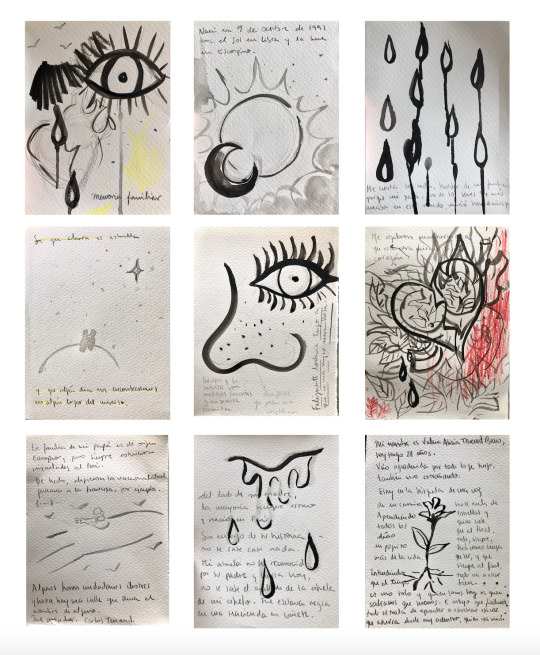
Actividades en clase (7-10-19 de julio)
Memoria Familiar + Libro arte
Estas dos actividades fueron muy bonitas pero muy difíciles de hacer, (al menos para mi).
Mi padre, a quien siempre fui muy cercana, falleció hace 4 años ya. Fue un proceso muy duro, una agonía larga y en general un momento muy difícil y muy triste. Es por eso tal vez que me costó mucho realizar estos dos ejercicios...
La actividad “Memoria Familiar” fue la que desarrollamos primero, fue una actividad a realizar la primera clase luego del examen parcial. Consistió en recolectar 5 fotos familiares que significaran mucho para nosotros y comentarlas.
Las 5 fotos elegidas por mi, son importantes por las personas que aparecen en ellas y los momentos que representan para mi. Otra característica en común de estas 5 fotografías es que todas fueron tomadas con cámaras análogas.

La segunda actividad que también estuvo relacionada con la primera y que también fue consecuencia de una charla sobre los micro relatos (dada el día 16 de julio, apuntes más arriba) consistió en crear un Libro Arte que cuente sobre el origen de nuestra familia junto con algunos símbolos que los representaran.
Decidí combinar ilustraciones a lápiz y tinta aguada junto con un tipografía escrita, contando el origen de mi familia paterna y el de mi familia materna.
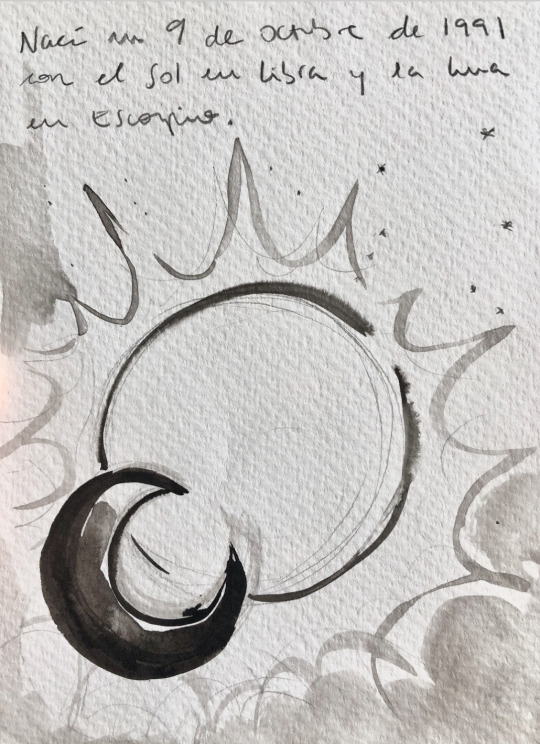
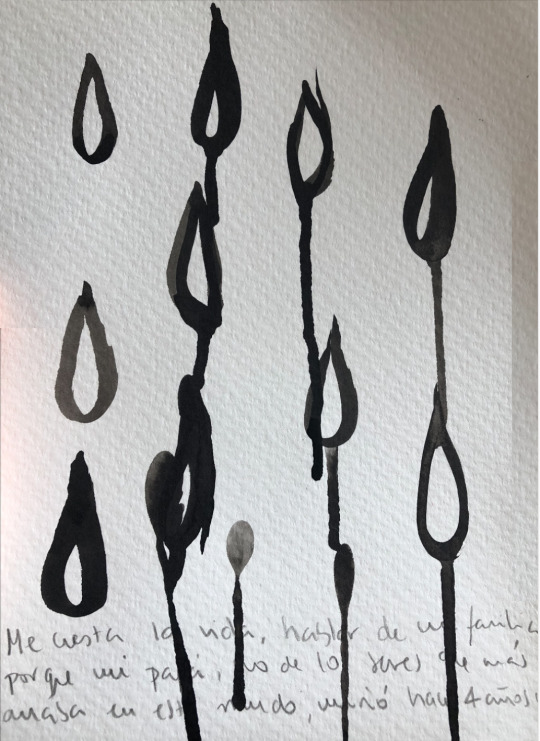
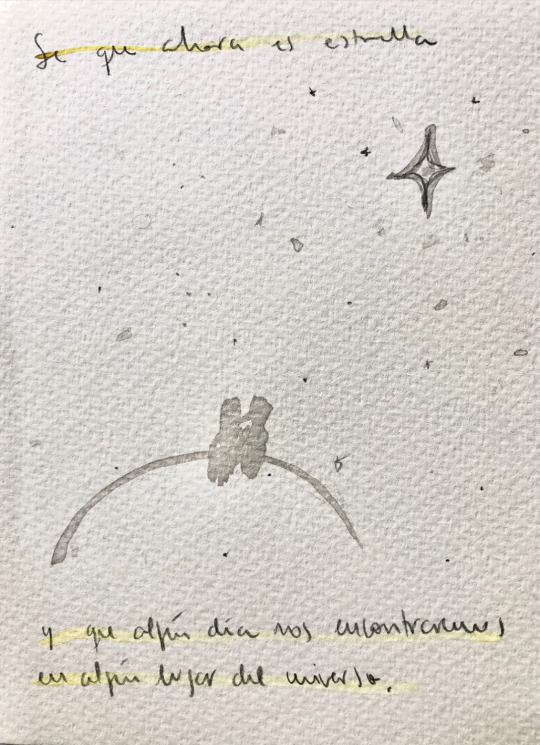

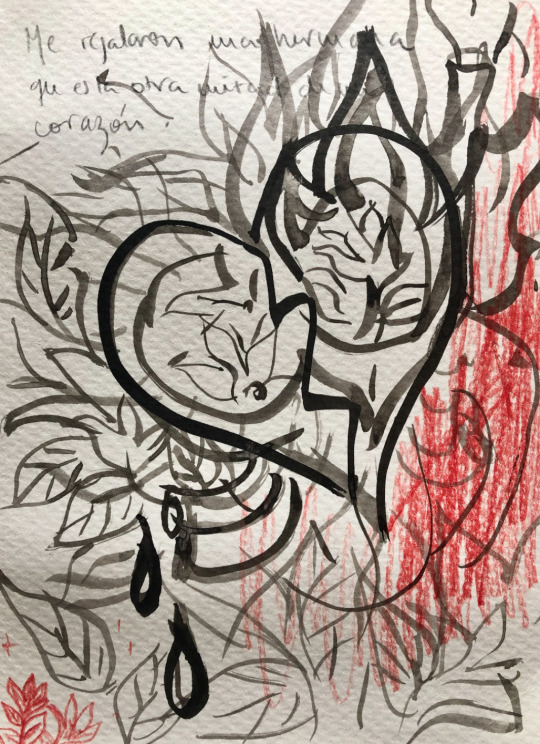

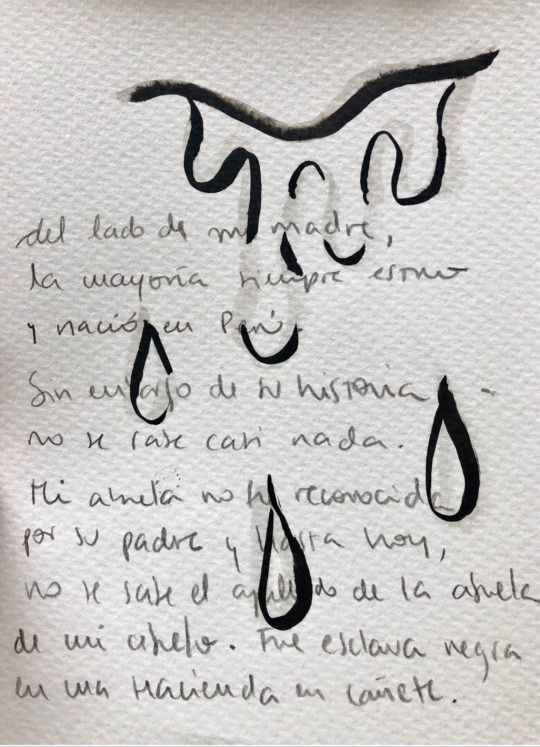
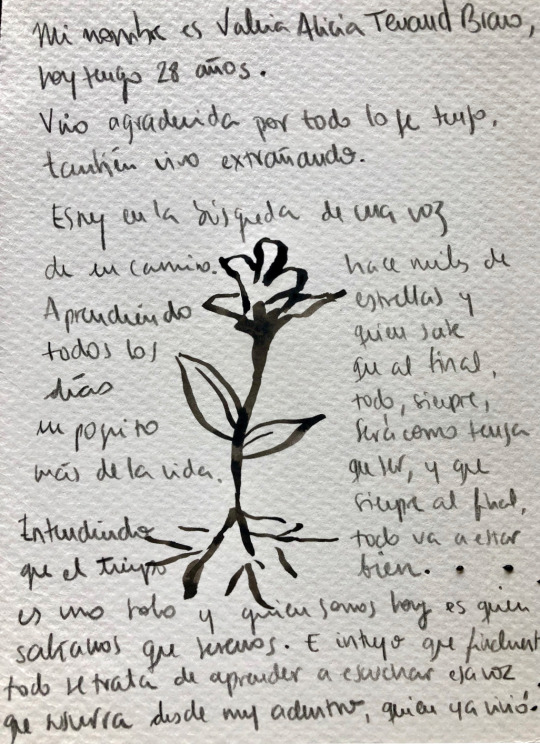
Así mismo consultamos la lectura Los lugares de la memoria: El arte de archivar y recordarde de Anna Maria Guasch
“Como afirma el filosofo Michel Foucault, el archivo es el sistema de «enunciabilidad» a traves del cual la cultura se pronuncia sobre el pasado”.
Desde 1970 hay un especial interés por
o bien ́
construidos, publicos y a la vez privados, reales y tambi ́ en ficticios o virtua- ́
les. En este ultimo caso, el medio propio del arte del archivo ser ́ ́ıa la red de
Internet que confunde y replantea los l ́ımites entre lo privado y lo publico.
«arte de la
memoria»
recuperacion de la memoria
«recordar como una actividad vital humana define nuestros vínculos con el pasado, y las v ́ıas por
las que recordamos nos define en el presente»
triple inter ́ es ́
(interes por el yo, por la realidad exterior y por el propio arte
necesidad de vencer al olvido,
interrogatorio a la naturaleza de los recuerdos.
«Recordar como una act ́ ividad vital humana define nuestros
vınculos con el pasado, sostiene Andreas Huyssen, y las v ́ıas por las que no-
sotros recordamos nos define en el presente. Como individuos e integrantes
de una sociedad, necesitamos el pasado para construir y ancorar nuestras
identidades y alimentar una vision de futuro»
Tanto Benjamin como Warburg reconocieron que las nuevas condiciones materiales de la vida contemporánea estaban conduciendo a un cambio profundo no sólo en la percepción del espacio sino en la lógica de la representación cultural.
Más referentes vistos en clase
Parte importante de las clases ha sido revisar la historia de nuestro país, enfocándonos específicamente en la época de conflicto armado. Personalmente me pareció muy importante hacer esta revisión de nuestra propia historia como territorio ya que fue una época que afectó de una manera inimaginable y tuvo como consecuencia mucho dolor y sufrimiento. Una herida muy profunda en nuestra historia como nación.
Revisamos diferentes materiales visuales y audiovisuales, que nos mostraron las diversas posibilidades que existen de abordar un mismo tema.
El primer material que revisamos fue el documental Caminantes de la Memoria de Hector Soto seguido de la exposición Yuyanapaq. Ambos muy fuertes y devastadores.

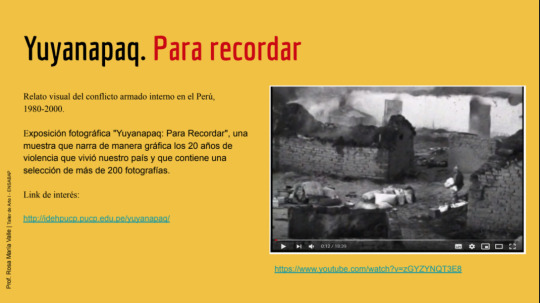

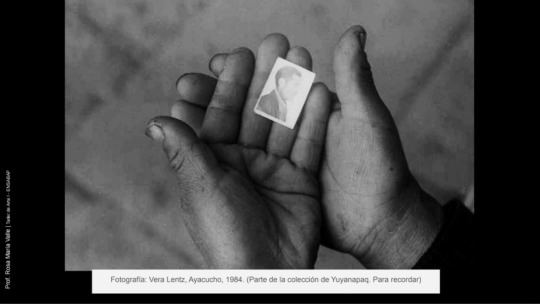



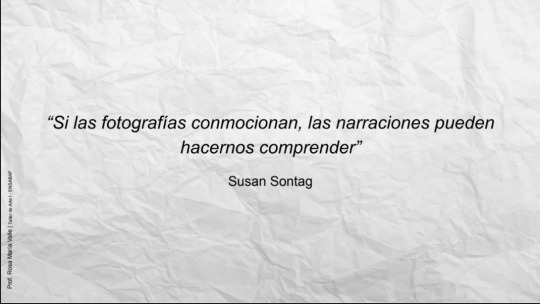
0 notes
Text
Sustainable microgrids are the future of clean energy
Alex Behrens Contributor
Share on Twitter
Alex is a research analyst and blogger focused on future technologies in transportation, energy, automation, and decentralization. He has experience in data and operations at Fortune 500 companies and tech startups and has been a regular contributor at Seeking Alpha, Spend Matters, Metal Miner, and other publications.
Across the U.S., sustainable microgrids are emerging as a vital tool in the fight against climate change and increasingly common natural disasters. In the wake of hurricanes, earthquakes, and wildfires, the traditional energy grid in many parts of the country is struggling to keep the power flowing, causing outages that slow local economies and ultimately put lives at risk.
Microgrids — power installations that are designed to run independently from the wider electricity grid in emergency situations — have been around for decades, but until the turn of the century, relied almost exclusively on fossil fuels to generate power. While it’s taken another 20 years for solar panels and battery storage costs to fall far enough to make truly sustainable microgrids an economic reality, a recent surge in interest and installations have shown that they’ve reached an inflection point and could very well be the future of clean energy.
Take Santa Barbara, where the Unified School District voted unanimously in November to allocate over $500,000 to study and design microgrid installations for schools around the county. A preliminary assessment by the Clean Coalition identified more than 15 megawatts of solar generation potential across 18 school sites.
These solar-plus-battery-storage microgrids would greatly enhance the ability of chosen schools to serve communities during natural disasters or power outages, like the ones induced by California’s PG&E electric utility that affected hundreds of thousands of residents last October. The sites will provide a place to coordinate essential emergency services, store perishable food, and provide residents with light, power, and connectivity in times of distress.
A completed feasibility study for the microgrid installations is expected in June, and while initial estimates put the final cost around $40 million, long-term power purchase agreements (PPAs) will allow the school district to have the sites set up for free and paid for over time via its normal electric bill — at a cost no greater than grid power. Agreements like these have only become economically viable in the last few years as renewable energy generation costs have continued to fall, and are a major driver of the microgrid boom.
At the end of January, Scale Microgrid Solutions received a commitment for $300 million in funding from investment firm Warburg Pincus. Microgrids today are typically designed and installed to the unique specifications of individual customers. Scale Microgrid Solutions instead provides modular microgrid infrastructure built using shipping containers that combine solar and battery storage with control equipment and backup gas generation.
These modules enable faster deployment and provide a viable option for customers or institutions seeking microgrid capabilities in the $15 million price range. The first modular microgrids were launched in May 2019 with financing provided by Generate Capital, a financing firm focused on advanced, clean-energy technology investments.
Meanwhile on the opposite side of the country, successive disasters are already proving the value of solar-plus-storage microgrids in Puerto Rico. In 2017, Hurricane Maria catastrophically damaged the centralized electricity grid in the U.S. territory and left many without power for more than a year.
A project funded by the Rocky Mountain Institute, Save The Children, and Kinesis Foundation installed solar-plus-battery-storage microgrids at ten schools in the mountainous central regions of the island, designed to provide energy for on-site libraries, kitchens, and water pumps indefinitely during power outages. The installations were completed in December 2019, just weeks before a series of earthquakes that began in January endangered the island’s already sluggish economic recovery. The RMI Island Energy Program told Microgrid Knowledge that while grid power around several of the sites had gone down, the microgrids had continued to operate successfully and provide critical services.
Microgrids go beyond schools though. Several communities are also linking together solar-and-storage systems mounted on their homes, employing inverters and controllers that have only become efficient and affordable in the last few years to create ‘community microgrids’ that share power among the participants to supplement or replace grid energy.
In January, Australian startup Relectrify closed $4.5 million in Series A funding to continue refining their inverter and battery-management technology that increases battery lifespan by as much as 30 percent while reducing operational costs. Relectrify tech also allows large batteries from electric cars — including Tesla’s wildly popular offerings — to be repurposed after they are no longer reliable enough for use in EVs, opening up an enormous pool of second-hand batteries to be repurposed for growing microgrid storage demand.
Programs like these are attractive not just because they offer resilience and independence from grid power often produced with fossil fuels, but because they are increasingly the cheaper option for energy consumers. Residential retail energy prices in Puerto Rico were as high as 27 cents per kilowatt hour (kWh) in 2019, while the calculated cost from home solar-plus-battery-storage systems fell as low as 24 cents in good conditions.
The cost of solar installations has plummeted 90 percent in the past decade according to the research firm Woods Mackenzie. At the same time, the early effects of a warming climate and associated natural disasters have started to take a toll on American energy infrastructure already struggling to keep pace with regular maintenance and demand growth. Impacted communities have already seen the value of microgrids and are racing to adopt them, even as many larger utility providers look to natural gas or other partial solutions that rely on the aging centralized power grid.
The greatest impact of these early sustainable microgrids may reach beyond the emergency power they provide to nearby residents. They offer a glimpse of a radically different way for communities and energy consumers to think about how power is produced and used. In community microgrid systems, residents have a concrete, practical connection to their source of energy and are asked to work together with their friends and neighbors to control their energy demand so there is enough to go around.
Such a system stands in stark contrast to the power grid of today, where peak demand facilities are routinely called upon to burn some of the most environmentally harmful fuels to accommodate demand with few if any social or technological limitations. Sustainable microgrids are finally becoming truly affordable, and in the process are beginning to change the way we think about energy consumption and resilience.
0 notes
Photo
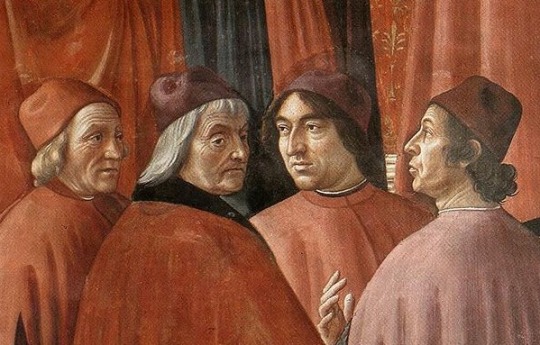
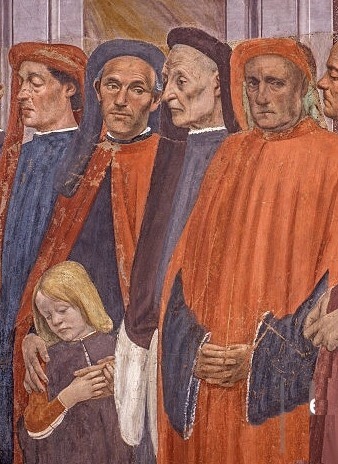
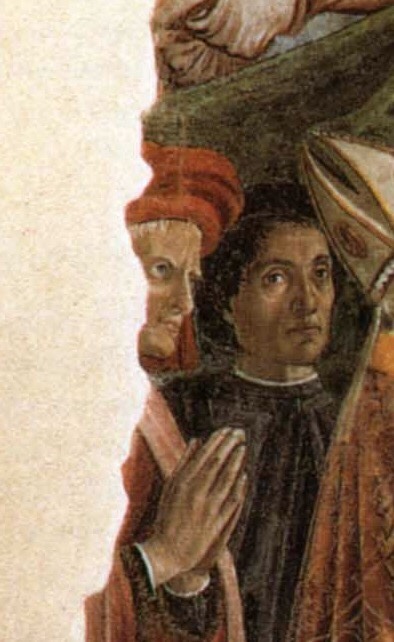
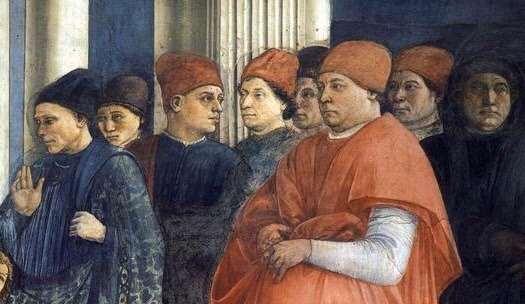

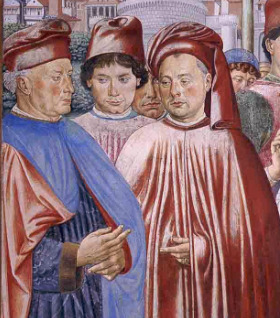

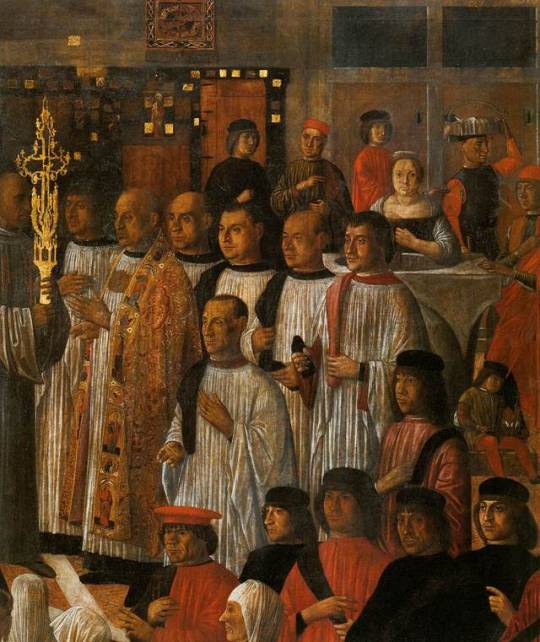

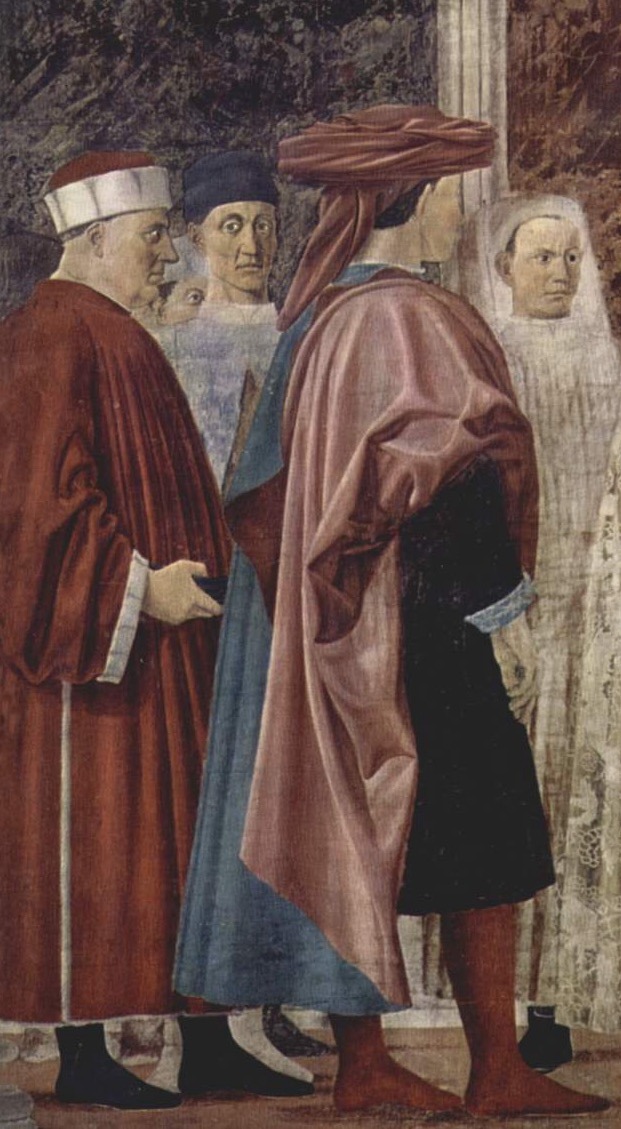
THE DIVINITY OF THE DAIILY
The crowds witnessing the martyrdoms and miracles depicted in quattrocento frescoes often include the work’s patron with members of his retinues. Anachonistically-dressed in contemporary finery, their owe their proximity to the holy, and the salvific benefits that proximity entails, solely to the representational powers of art--there is no other way they can have that experience as mortals. This gives one a sense of the high purposes and stakes involved in the commissioning and creating of religious art in this period.
Given those high stakes, the depicted reactions and behaviors of those patricians in the divine presence is disconcerting. Instead of falling to their knees in reverent silence and riveting all attention on the often grisly events taking place before them, they speak amongst themselves, look over their shoulders, instruct servants and adjust their clothing. Some look out at the viewer, instead of the saints. Others stroll past revivifications without pausing to look. If they wore watches, they would be checking the time. One senses they wear fine clothing because they are stylish and wealthy, not because today was a special day.
Of course, these are not images of bored, sacrilegious grandees stuck in traffic: one expects cultured Italian patricians to keep their cool in all situations. Scenes of hysterical bankers prostrating themselves would imply a calamity, rather than an epiphany, had taken place.
Paradoxically, it is precisely the anecdotal representation of the details of daily life, carried on normally and unexceptionally, that convinces the viewer that what they see arrayed before them is really occurring and enables the miraculous vision. The power of naturalism serves to familiarize and ratify, rather than demystify, the experience of the divine, and to makes the idea of its startling eruption into the secular world seem plausible, comprehensible, and survivable.
The proverb “God is in the details,” attributed to Michelangelo and Flaubert, and used regularly by Aby Warburg and Mies van der Rohe, is the perfectionist’s version of this idea.
#renaissance art#fresco cycles#domenico ghirlandaio#masolino di panicale#filippino lippi#crowd scenes
21 notes
·
View notes
Text
tredici giugno
Jacques Henri Lartigue
Mare portoghese
O mar salato, quanto del tuo sale
Lacrime sono della nostra gente!
Solcammo le tue onde. Quante madri,
Da allora , in pianti si sciolsero e quanti
Figli invano pregarono il Cielo!
Quante donne non ebbero marito
Perché tu fossi nostro, o mar ignoto!
Valse la pena? Se l’anima è grande
Tutto quel che si fa vale la pena.
Chi vuole Bojador…
View On WordPress
#Aby Warburg#Anna Maria Ortese#Étienne Gilson#Bronisław Baczko#Carlos Montemayor#Fernando Pessoa#Giovanna Zangrandi#Jacques Henri Lartigue#Leopoldo Lugones#William Butler Yeats
0 notes